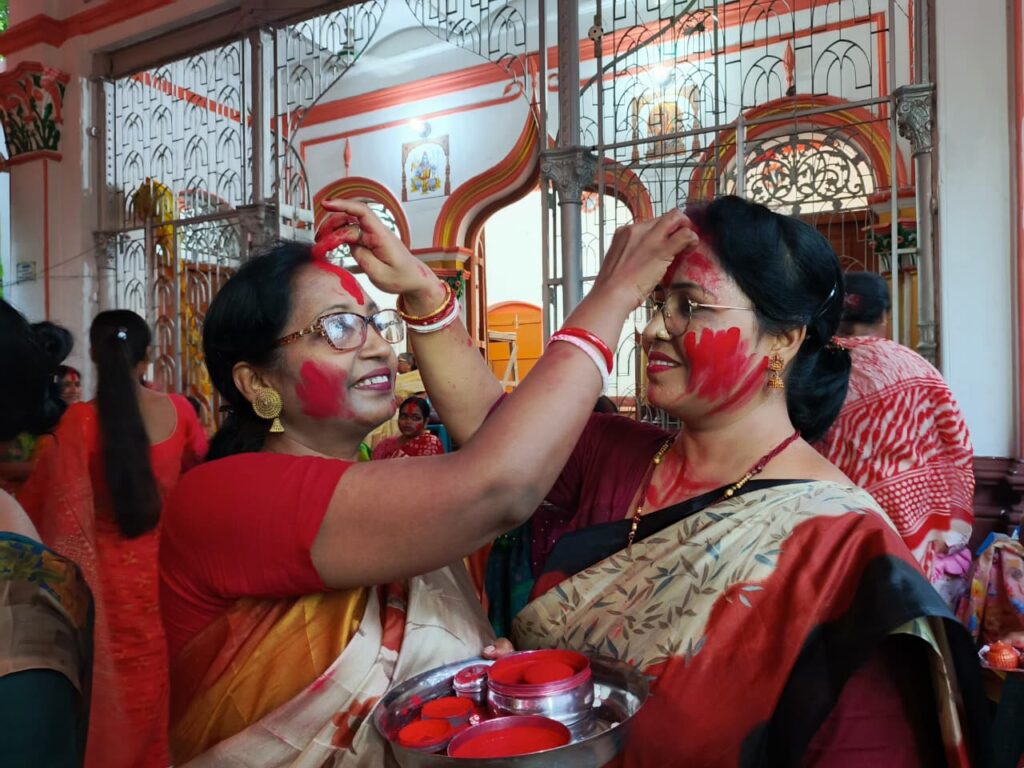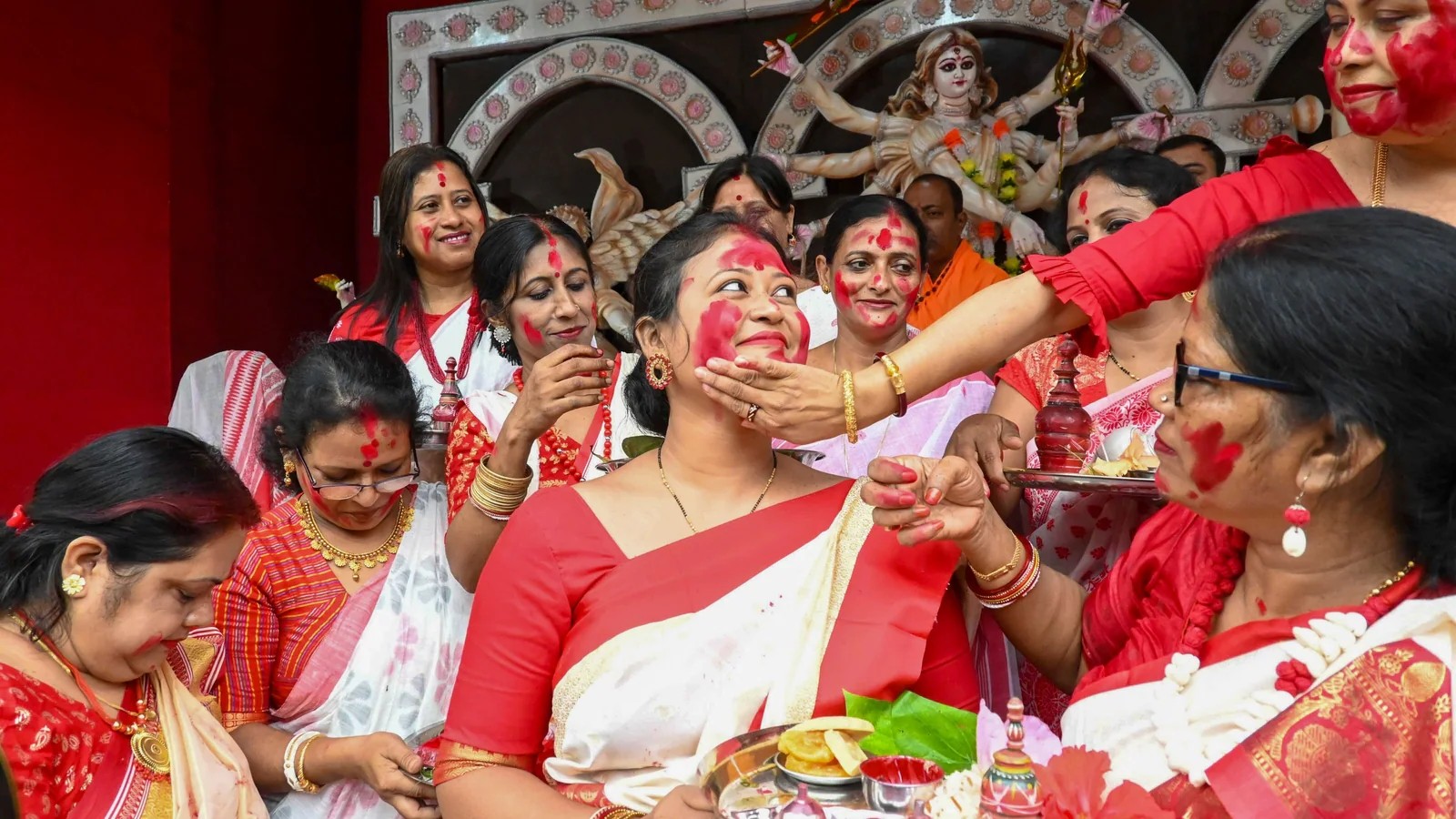BDrunner, Sept 30: Sindoor Khel is the spectacular finale of Durga Puja, where women anoint each other with vermilion to bid farewell to Goddess Durga. This is a symbolic Bengali custom.
Sindoor Khel literally means vermilion play. It is a ritual performed just before the immersion (bashing) of the idol of Goddess Durga on the last day of Durga Puja, Vijaya Dashami. Traditionally, married Bengali women first offer vermilion on the forehead and feet of the idol of Goddess Durga for immersion, as a symbol of respect and devotion. After the offerings are complete, the fun begins – they apply vermilion on each other’s faces and foreheads, exchange sweets, and share blessings for a long, happy married life. The colour red is not just a symbol of marital bliss – it is also a celebration of women’s power, community, and sisterhood.

If there is one colour to be associated with the celebration of Durga Puja, it would be red – bold and vibrant. Durga Puja reaches its climax on the Dashami of Navratri, with Vijaya Dashami. Many sacred rituals are performed on this day to bid farewell to Maa Durga, of which Sindoor Khel is one of the main rituals of the celebration. Imagine a sea of married women wearing red-bordered white sarees, playing Holi-like games by smearing each other with vermilion. For the Bengali community, Sindoor Khel is a ritual that transforms the farewell of Maa Durga into a celebration of strength, love, and unity.
One of the most important rituals of Dashami, Sindoor Khela, has now become one of the most photographed, celebrated, and talked-about events in the nation. Let us all learn more about the traditional Bengali tradition and its significance.
On the morning or afternoon of Dashami, Sindoor Khel is held just before the grand immersion procession begins. The air is filled with the beat of dhaks, the sound of conch shells, and the bittersweet feeling of bidding farewell to the mother. Women in white and red saris gather around the idol with plates of vermilion, sweets, and betel leaves.
Over the years, the vermilion dance has transcended tradition, welcoming not only married women but also widows, single women, and even men – making it a celebration of inclusion, joy, and collective strength.
The vermilion dance is more than just a ritual – it is an emotion. It is about celebrating womanhood, spreading love, and bidding farewell to Maa Durga with laughter instead of tears. In 2025, when pandals around the world resonate with the tune of dhaks and the aura of vermilion fills the air, let us remember the true spirit of this tradition: unity, strength, and joy.
N/M


